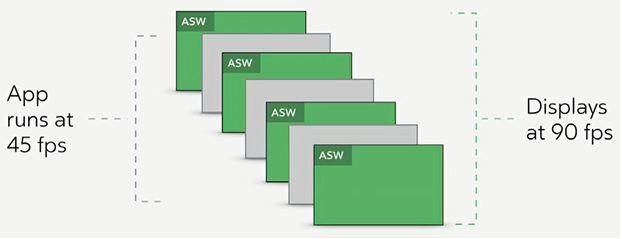The Oculus Connect 3 conference today announced a series of $500 configurations supporting Oculus VR computers. These computers are faster, smoother, and cheaper. In the first half of this year, Oculus just announced the Rift when its proposed entry-level PC or host computer with a GTX 970 graphics card for $900. Today, Oculus leverages strong technical strengths to lower the threshold of VR computers, allowing VR hosts to become more affordable without compromising the user experience. This is also the first time we have seen Oculus and AMD and CyberPower launch cheap VR computers.

The new CyberPower PC's graphics card is the RX 470, which is more than the minimum VR configuration performance of the Oculus's recommended GTX 970. And Oculus today again out of the new system asynchronous space warp (asynchronous space warp), can guarantee 90 frames / second VR screen. However, we still have very little information on asynchronous spacewarp.
Earlier this year, Oculus had a rough introduction to the asynchronous timewarp system. In essence, asynchronous timewarp allows developers to ensure that what the user sees matches the 3D space. Without asynchronous timewarp, the game needs to measure the player's position first, then render the image, and then transfer the rendered graphics to the helmet. If the player moves after the sensor scans to the player's position, the picture presents the player's previous position, not the current position. With the asynchronous timewarp system, the problem can be solved. The asynchronous timewarp can reconstruct the graphics one second before the image is generated to ensure that the generated image correctly reflects the player's position.
Asynchronous timewarp technology can also alleviate the image's periodic lag, but it can't completely solve the problem of low frame rate.

Asynchronous timewarp technology can adjust the image to ensure that it matches what the user actually sees before the image is generated.
Asynchronous timewarp technology generates a computer-specified image between animations by analyzing content and vector motion. However, Oculus still suggested that 90 frames are additional options. Oculus believes that Asynchronous timewarp technology is an effective method to lower the price of VR computers. Oculus joins AMD and CyberPower to advance the application of this technology.
Currently, the minimum computer configuration for Rift is the GTX 960 or RX 470 graphics card, Intel Core i3-6100 or AMDFX-4350, and at least 8G of memory. Prior to the announcement of Oculus minimum configuration Core i5-4590+GTX 970. Both the Oculus Rift and the HTC Vive are expensive, but it is not easy for Oculus to reduce the cost of the VR experience by 300 to 400 US dollars within a year. However, HTC Vive and Oculus Rift helmets are currently not showing signs of price cuts. If the overall price of VR helmets can be reduced so much, it is crucial for VR helmets to enter the mainstream market.
This is why we repeatedly recommend that users delay the purchase of Vive and Rift. Only those tech lovers and high-income people are suitable to start these VR helmets. However, it seems that the cost of VR-ready products in the future will continue to decline. If you plan to maximize your purchase value, waiting is the best option, and look at the market before you enter the pit.